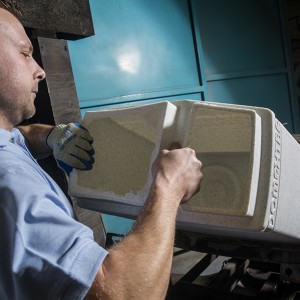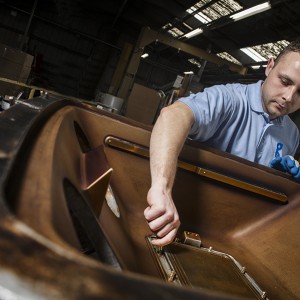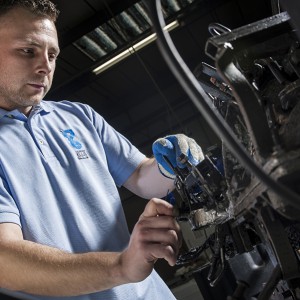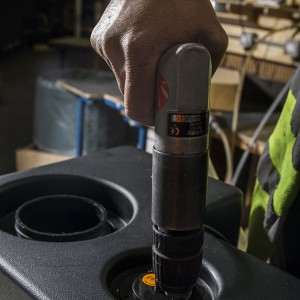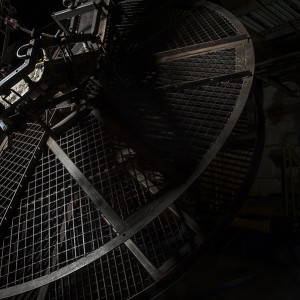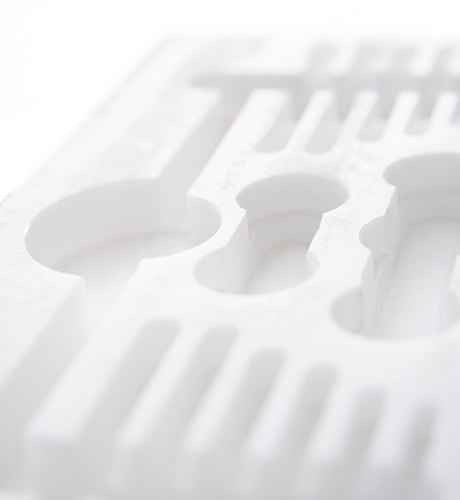Introducing Rotamoulding
Rotational moulding produces strong, hollow objects that are very durable and weather resistant. The process is often used to replace complex metal parts and fabrications with a single piece moulding. It also gives designers new options, as it is easy to add features such as UV stability, anti-bacterial protection and glow-in-the-dark (phosphorescence), throughout the whole moulding, rather than just as a surface coating. The hard-wearing nature of rotomould products means that mouldings will last many years – ideal for industrial or outdoor uses.
The rotational moulding process
Tooling
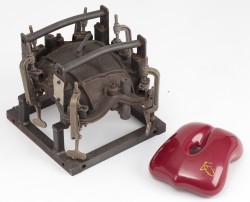
The first step is to produce a hollow metal mould called a tool. This is the first benefit of rotamoulding, as the tooling cost and complexity required for this process is significantly lower than that of injection moulding or blow moulding. The tools can be made from cast aluminium, fabricated steel, CNC block aluminium or CNC steel, depending on the requirements of the product. We will always advise the best match for your project. The low tooling cost is ideal for small to medium production quantities and the simpler tools get your project up and going quicky.
Filling
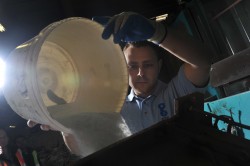
The tool is filled with a measured amount of plastic powder or pellets, called the shot weight. We use a wide range of materials, such as PP, LDPE, MDPE and nylon, and it is even possible to use a combination of these, either as different layers, or as a mix. Metal inserts and moulded-in threads can be added at this stage, as well as logos and text which are permanently moulded in to the product.
Heating
The two sections of the tool are closed up and it is moved on a mechanical arm into one of our ovens, which can be heated as high as 360º Celsius. The arm is continuously rotated in the oven, about 10 times per minutes, around both the horizontal and vertical axis. This helps the softened material to disperse and stick to the walls of the mould, in a process called sintering. Rotating the tool progressively builds up the plastic around the inside, forming an even layer and also helps to avoid sagging and deformation.
Cooling
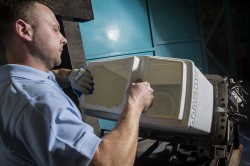
The tool is now removed from the oven and cooled by fan, or placed into a cooling chamber, where the arm continues to rotate the tool while it is cooled with air. The plastic inside the mould becomes solid. The finished moulding is removed quickly to ensure it doesn’t distort, then is typically placed onto a cooling jig, to maintain the form while it cools.
Trimming and Assembly
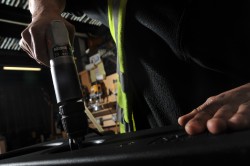
Once the moulding has been checked and we are satisfied that it meets the required standards, we can drill holes or fit components or fixtures. These could include electronic sensors, pipes and stickers. We also have an in-house spray shop, so that specialist sprays, coatings or polish can be applied.
Packaging
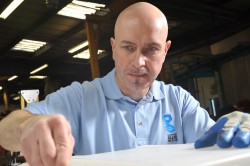
If required, we are able to offer a complete service for our clients, including packaging the finished product, warehousing it and even despatching it direct to your customer. For a small business, this could save significant expense. Where we are moulding a component of a bigger whole, such as for the automotive and plant machinery industries, we will always look at how we can package and deliver to best suit your production supply chain.
